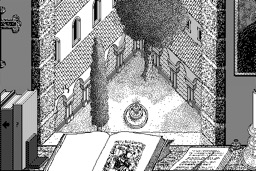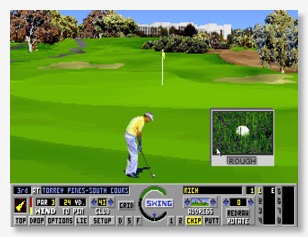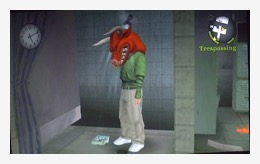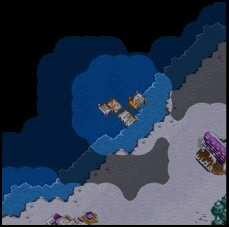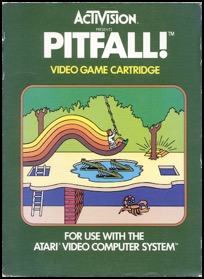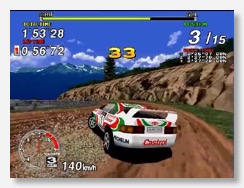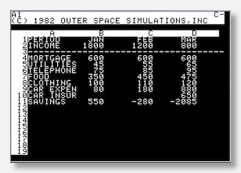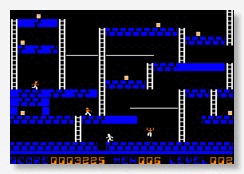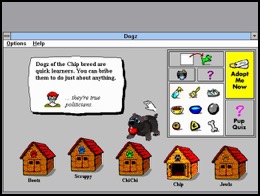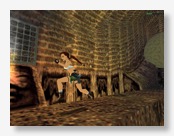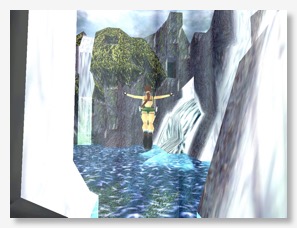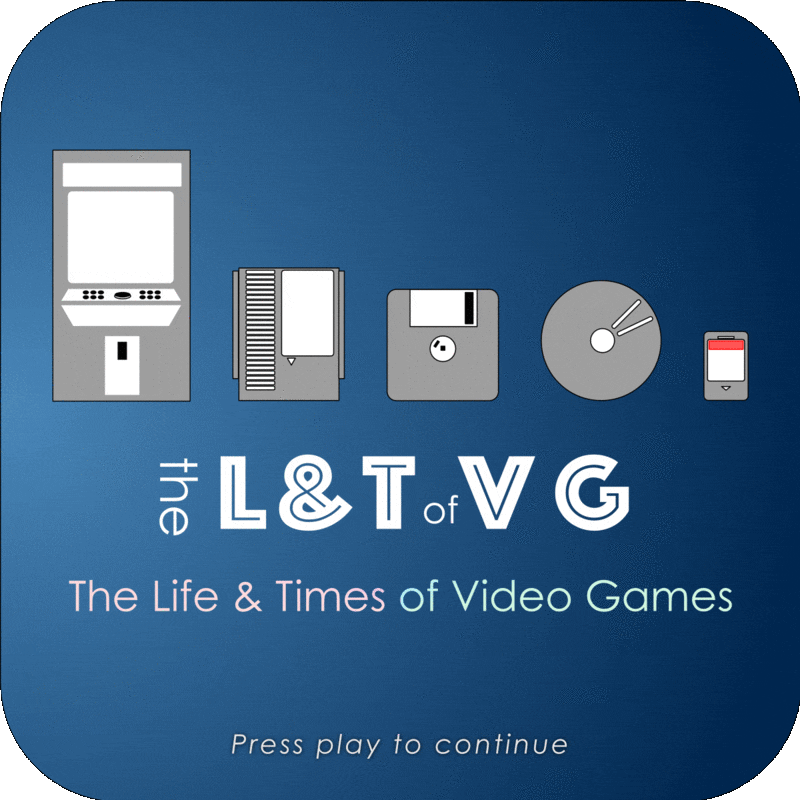31 Dec 2021
It all started with a Macintosh ad: 'You too can be a knowledge worker.' This is the story of Brian Thomas' 15-year odyssey at the helm of one of the strangest pieces of multimedia software ever created — If Monks Had Macs.
See full show notes and episode player…Tags: ludiphilia, if monks had macs, brian thomas, mac, hypercard, multimedia
26 Oct 2021
To celebrate the 25th birthday of my favourite game franchise, I thought I'd pull out the old Tomb Raider grid episodes from Season 1 and merge them into one. I also put some time into cleaning up the audio, though it'll still sound rough compared to newer episodes — given the lower-fidelity recordings I was using then. Here's the original episode description:
Every aspect of the original Core Design Tomb Raider series (and by extension the franchise's success post-Core) comes back to the grid that lies beneath it — the majority of the puzzles; the platforming; the cavernous chambers and ruins and outdoor areas that provide a sense of isolation, of solitude and discovery; and Lara Croft's iconic acrobatic movement style. And yet it never would have happened if not for one pragmatic choice made by a programmer early in the game's development.
This is the story of how that came to be, and how it made Tomb Raider…well,
Tomb Raider, based on interviews with Heather Stevens (née Gibson) and Gavin Rummery as well as my past work covering Tomb Raider's history as a freelancer. The second part, which was originally a separate release, also includes discussion of the place that such a grid system has — or might have — in game design today.
See full show notes and episode player…Tags: tomb raider, lara croft, gavin rummery, heather stevens, andy sandham, core design, game design
02 Oct 2021
There was no encyclopaedia nor fleshed-out database of video games in 1999. There were barely even any reliable or comprehensive
lists of video games. Not until Jim Leonard decided he needed to build one.
He called it
MobyGames, and 22 years later it's the de facto source for credits, screenshots, and other general information about video games. It is the "IMDB of video games". This is its story.
See full show notes and episode player…Tags: mobygames, jim leonard, clint basinger, lazy game reviews, john romero, matej jan, retronator, john sczepaniak, tomer gabel
19 May 2021
How a game designed in a week helped to change everything — for the company that made it, for a local industry in turmoil, and for a global industry in transition.
Features interviews with Defiant Development co-founder Morgan Jaffit and Firemint founder / Flight Control creator Rob Murray, along with a clip of former Touch Arcade editor Eli Hodapp.
See full show notes and episode player…Tags: flight control, mobile games, iphone, rob murray, morgan jaffit, australia, firemint, defiant development
09 Dec 2020
It was "the greatest speech he ever gave in his life", and it marked a turning point in his pursuit of his dream, but it had the note of a eulogy. This is the story of how — and why — the legendary designer Chris Crawford left the games industry in an opening-day lecture at the 1993 Game Developers Conference, an event that he had founded just six years prior.
See full show notes and episode player…Tags: chris crawford, balance of power, balance of the planet, gdc, games as art, interactive storytelling
02 Nov 2020
When Don Daglow pitched management at Mattel on an Intellivision game about trying to build a perfect society, he thought he was just creating a "line filler" in their product calendar. Instead he made one of the most important games of all time.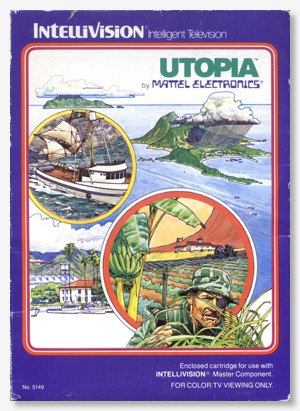

See full show notes and episode player…Tags: don daglow, utopia, intellivision, game design, richard bannister, retro games for mac
28 Sep 2020
On the rise and, um...
fade out(?) of Chris Sawyer, the genius creator of bestselling, critically-acclaimed simulation games Transport Tycoon and RollerCoaster Tycoon — who made a career out of working at the cutting-edge, in bare metal assembly code that he wrote and optimised (and optimised again) on his own.
Until the cutting-edge left him behind.
See full show notes and episode player…Tags: chris sawyer, transport tycoon, rollercoaster tycoon, simulation, game design, programming
30 Aug 2020
In 1990, in a bid to move ahead of their rivals, Access Software reinvented virtual golf. Their game Links set the template for golf games over the next decade, with a technological tour de force, and along the way it dominated bestselling PC games charts month after month, year after year. Until suddenly it didn't.
This is the story of Links and the huge shadow it cast over its genre.
See full show notes and episode player…Tags: access software, links, golf, sports games, kevin homer, vance cook
03 Aug 2020
I go inside Australia's only permanent video game console museum and find that what makes it special is more than just the size of its collection — or the fact that it exists.
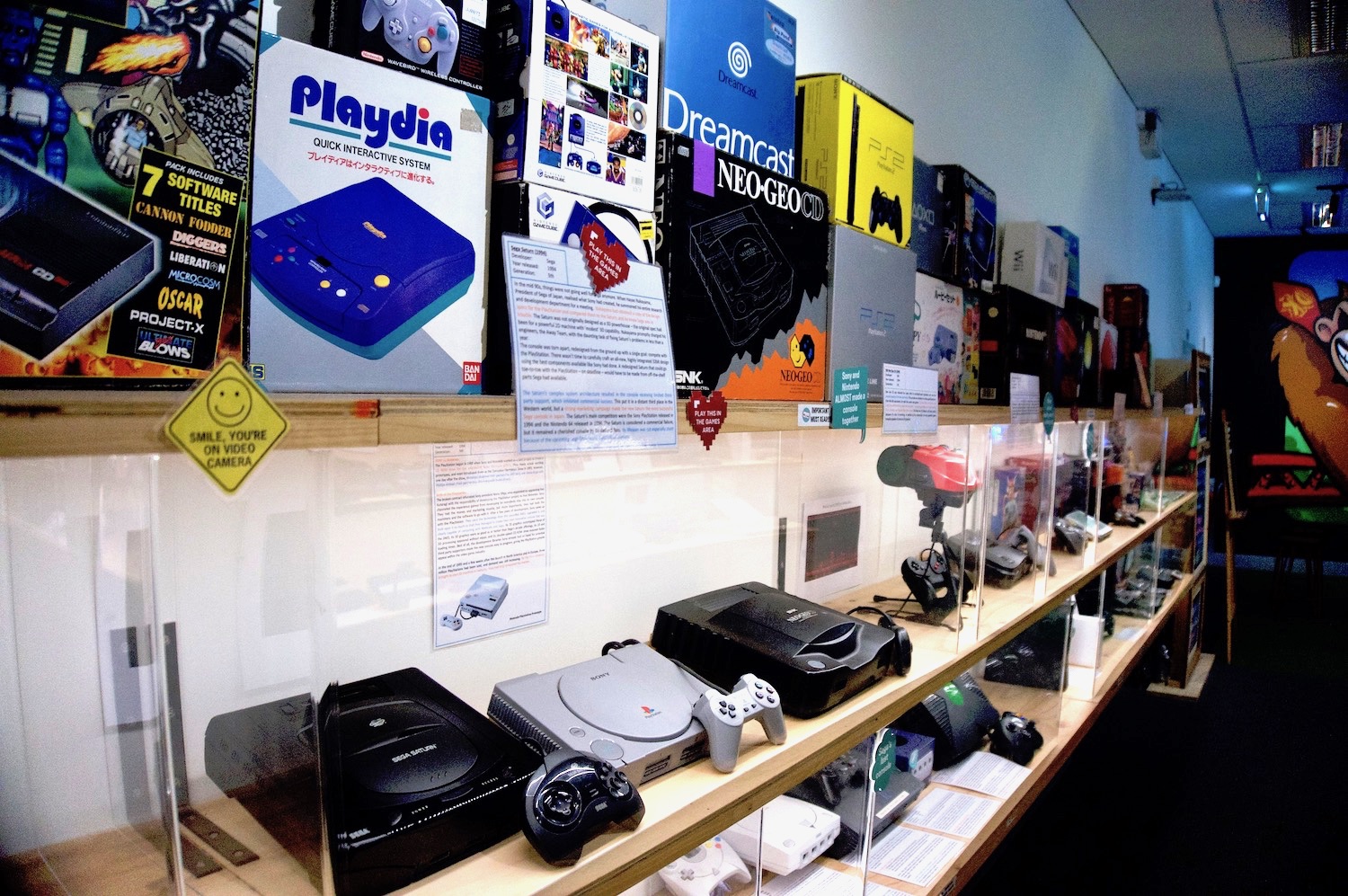 See full show notes and episode player…
See full show notes and episode player…Tags: the nostalgia box, museum, covid-19, australia, perth
09 Apr 2020
It began as an impromptu April Fools' Day gag, but Pimps at Sea was the joke that kept on giving. This is the story of how a chance encounter on the streets of Chicago led to a semi-annual tradition, an industry/fan-favourite insider joke, and a cult classic multiplayer game.
See full show notes and episode player…Tags: bungie, matt soell, pimps at sea, joke games, comedy, halo
27 Feb 2020
How 2006 PS2 hit Bully (aka Canis Canem Edit) showed an alternate future for Rockstar and the open-world genre, with its compromised-yet-brilliant schoolyard satire — here I dive deep into the game, not for its overblown controversies but rather for its struggles against technological limitations and its triumphs in world-building, satire, and focused, more intimate and structured open-world game design. And I wonder why, nearly 15 years on, open-world games continue to strive for bigger and bigger playgrounds filled with more and more trivial collectibles rather than building on the legacy of Bully's deliberate, glorious smallness.
See full show notes and episode player…Tags: bully, rockstar, open world, ps2, dma design, game design, satire, comedy
30 Jan 2020
In war, no information is complete. No intelligence absolute. No view of the enemy unobstructed. There’s no such thing as perfect knowledge. It is a realm of uncertainty, where decisions are made on flawed and often outdated data — as though looking through a fog.
Hence the term, the fog of war, a military phrase with origins in the musings of a 19th century Prussian general called Carl von Clausewitz. A phrase that’s since found its way into video game lexicon, and video game design, as we explore here. (Featuring interview clips with former Blizzard lead programmer Patrick Wyatt about the fog of war in Warcraft II and StarCraft.)
See full show notes and episode player…Tags: fog of war, warcraft, blizzard, game design, wargaming, strategy, close combat, adventure, rogue, patrick wyatt, empire
24 Dec 2019
The sound designers from Age of Empires I and II, brothers Chris and Stephen Rippy, tell the story behind the iconic "wololo" priest chant — for converting enemy units to your side — that's since become a popular meme, as I delve into its strange legacy.
See full show notes and episode player…Tags: age of empires, sound, chris rippy, stephen rippy, ensemble studios, microsoft, fan culture
22 Nov 2019
It’s strange to think of a time before jumping was a standard video game action, to be expected whenever and wherever you have control over an individual character. A time before you could hop onto enemies’ heads and not die, or swing on ropes, or move back and forth across a vast level — many times wider than the screen.
But these ideas were rare, and just beginning to find their way into video game lexicon, when David Crane came along and with one single game turned them into tropes. With just one game that had begun as a simple tech demo of a running man. One game that would go on to define a console generation, amid 64 consecutive weeks atop the Billboard bestsellers chart and a whopping four million lifetime sales on a gaming system that itself sold 30 million units.
That one game is Pitfall!, or Jungle Runner, as it was called during development, an Indiana Jones-like adventure distilled into the (home console) video game technology of the era.
This is the story of Pitfall!'s creation and its phenomenal legacy, pieced together from myriad sources — interviews, reviews, history articles, promo videos, book chapters, retrospectives, and a 2011 postmortem delivered at the Game Developers' Conference by none other than David Crane himself.
See full show notes and episode player…Tags: pitfall, atari 2600, david crane, game design, programming, 1980s, platformers
08 Nov 2019
How a quest to put sound in an early Mac game helped usher in a revolution in computer game audio design and production.
Features interviews with tech entrepreneur Charlie Jackson and former Adobe and Microsoft executive Eric Zocher, who together co-founded 1980s software company Silicon Beach Software — a pioneer in creative software tools and desktop publishing, as well as the publisher of several popular games (two of which we cover here: Airborne and the original Mac version of Dark Castle).
See full show notes and episode player…Tags: silicon beach, dark castle, airborne, eric zocher, charlie jackson, mark stephen pierce, jonathan gay, mac, 1980s, music, sound, audio design, voice acting, dick noel
03 Sep 2019
On the rise and fall of the Premier Manager series of soccer management games — a former PC gaming juggernaut that lost its way amidst a shuffle of developers and publishers — and the part it played in the broader consolidation and homogenisation of sports games (of all kinds) over the past 20 years or so.
See full show notes and episode player…Tags: game design, gremlin, infogrames, premier manager, british games, business, championship manager, football manager, sports interactive, soccer, sports games, amiga, pc
25 Jul 2019
Far from a mere "Worms in 3D", Hogs of War was its own breed of madness. Hear the story of how it evolved from a concept of "Command and Conquer with pigs", what made it such a well-designed satire, and how this underrated PlayStation game saw the funny side of serious global conflict.
See full show notes and episode player…Tags: game design, gremlin, worms, hogs of war, infogrames, ps1, artillery, british games, multiplayer games, command and conquer, comedy, satire
01 Jul 2019
How Nintendo and its mascot created a genre, and a combat-racing franchise heavyweight, and in the process gave us a masterclass in game balance, with the best-selling 1992 Super Nintendo game Super Mario Kart.
See full show notes and episode player…Tags: game design, super mario kart, nintendo, super nintendo, mario, racing, multiplayer games, japanese games
08 Jun 2019
Sega Rally Championship changed everything for the racing genre, and the 1995 off-road arcade hit was an incredible game too. This is the story of its development, critical reception, and long-term legacy.
See full show notes and episode player…Tags: game design, sega rally championship, sega, rally games, tetsuya mizuguchi, japanese games, multiplayer games, ridge racer, racing, daytona usa, arcade, kenji sasaki, colin mcrae, sega saturn
16 May 2019
Before computers had proper multitasking support and quick shortcuts for changing apps, playing games when you're not supposed to be could be super risky. But if there's one thing that's been a constant in technology, it's that wherever there are computers, there are also games. And for a while, in the 1980s and 90s, many game developers actually put in a special key command that would bring up a fake productivity screen. This is the story of the rise and fall of the boss button.
See full show notes and episode player…Tags: boss button, boss key, roger wagner, brøderbund, hackers, spacewar, boss coming, games at work, bezare, maze, apple ii, plato, dave lebling, brand fortner, plato, windows 95, dos, mac, pc
01 May 2019
The story of how a terrible description of the Donkey Kong arcade game led to the creation of Lode Runner, one of the greatest games of all time and one of the earliest games with a built-in level editor.
See full show notes and episode player…Tags: game design, apple ii, arcade, brøderbund, doug smith, level editors, lode runner, puzzle games, donkey kong, mainframe games
23 Nov 2018
On the 90s girl games movement, and its assault on the status quo of the video game market, featuring Girl Games Inc founder and former filmmaker Laura Groppe.
See full show notes and episode player…Tags: game design, girl games, laura groppe, brenda laurel, business, theresa duncan, barbie, mattel, teen digital diva, marketing, 90s gaming
01 Nov 2018
Before something like the Xbox could ever hope to exist, Microsoft first needed to learn how to be a successful games publisher on the PC. This is the story — or part of it — of how Microsoft got games, featuring input from four key Microsoft Game Studios people — Ed Fries, Stuart Moulder, Ed Ventura, Jon Kimmich — and Age of Empires co-creator Rick Goodman.
See full show notes and episode player…Tags: microsoft, pc, ed fries, jon kimmich, ed ventura, stuart moulder, age of empires, flight simulator, xbox, close combat, games publishing, rick goodman, business, marketing
19 Jul 2018
On June 11th, 2018, character designer and artist Shoji Mizuno passed away. He was a key figure back in the 1990s at the now-defunct Hudson Soft, a renowned Japanese games publisher — having directed art or design, or sometimes both, on more than a dozen games in the popular Bomberman franchise as well as providing original character designs for the Beyblade anime series.
Since this year is also the 35th anniversary of the release of the first Bomberman game on the MSX, I thought now would be a good time to look back on how the explosive puzzle franchise made its way into the world — and into the hearts of millions.
See full show notes and episode player…Tags: game design, bomberman, hudson soft, shoji mizuno, japanese games, multiplayer games, eric and the floaters, dynablaster
14 Jun 2018
Frustrated by the unjustified furore that surrounded his tame interactive movie game, designer Rob Fulop turned to Santa for help. And with a clever business model he and his team at PF Magic invented a new kind of game, one in which you adopt and care for a digital animal — a virtual dog or cat, or something more exotic, with a personality and needs and quirks not unlike a real one.
See full show notes and episode player…Tags: game design, catz, dogz, hexing, night trap, petz, pf magic, rob fulop, simulation, virtual pets, us congressional hearings into video game violence
28 Mar 2018
On the late Mike Singleton and the importance of Midwinter and The Lords of Midnight, his two great works. After switching from high school English teaching to professional game development in the 1980s, Mike quickly rose to the top of the industry. His games pushed the limits of what was possible, and he routinely crafted worlds that were way ahead of their time.
Here, based on archival research and old magazine interviews, I present part of his incredible story.
See full show notes and episode player…Tags: game design, amiga, atari st, midwinter, mike singleton, open world, the lords of midnight, british games
18 Feb 2018
Continuing the story from Part 1, this is how the original Tomb Raider's grid-based engine/level editor impacted on the series, on Lara Croft's rise to fame, and on the shifting sands of blockbuster game development. This episode also discusses the place that such a grid system has — or might have — in game design today. Featuring input from former Core Design artists and level designers Heather Stevens and Andy Sandham as well as programmer Gavin Rummery.
See full show notes and episode player…Tags: game design, 3D, core design, lara croft, level editors, tomb raider, gavin rummery, heather stevens, andy sandham, toby gard
23 Dec 2017
Every aspect of the original Core Design Tomb Raider series (and by extension the franchise's success post-Core) comes back to the grid that lies beneath it — the majority of the puzzles; the platforming; the cavernous chambers and ruins and outdoor areas that provide a sense of isolation, of solitude and discovery; and Lara Croft's iconic acrobatic movement style.
And yet it never would have happened if not for one pragmatic choice made by a programmer early in the game's development.
This is the story of how that came to be, and how it made Tomb Raider…well, Tomb Raider, based on interviews with Heather Stevens (née Gibson) and Gavin Rummery as well as my past work covering Tomb Raider's history as a freelancer.
See full show notes and episode player…Tags: game design, 3D, lara croft, tomb raider, toby gard, heather stevens, gavin rummery, core design, level editors
11 Nov 2017
At the dawn of emulation and the World Wide Web, a group of fans discovered the Nintendo and Super Nintendo games that never made it over from Japan. One of them decided to hack into a few of these and translate them, unofficially, with help from some friends — starting with Final Fantasy II for the NES.
Featuring quotes from Steve Demeter, founder of one of the first fan translation groups, Demiforce, who was the driving force behind three high-profile ROM hacks — the Final Fantasy II and Radical Dreamers translation projects, and the Earthbound Zero prototype release.
See full show notes and episode player…Tags: chrono trigger, demiforce, earthbound, emulation, fan translations, final fantasy, nes, radical dreamers, rom hacking, super nintendo, steve demeter
23 Oct 2017
A story from the dawn of 3D sports games, and the forgotten link between the 16-bit isometric and 32-bit 3D EA Sports games — this is how FIFA 3DO transformed the way sport was represented in video games.
See full show notes and episode player…Tags: game design, 3D, fifa, ea sports, isometric, marc aubanel, soccer, sports games, 3DO
15 Oct 2017
How a marketing guy at shareware game publisher Ambrosia Software ended up eating bugs in front of hundreds of people at Macworld New York 2000.
See full show notes and episode player…Tags: ambrosia software, bugs, cythera, jason whong, mac, macworld, marketing, PR, shareware
01 Oct 2017
This is the story of illustrator Mark Ferrari, whose artwork was so good it forced Lucasfilm Games to figure out how to make a graphics technique called dithering compress to fit on floppy disks — in the process winning awards and triggering the use of dither in the wider games industry — and who pioneered the use of two background illustration tricks that gave the illusion of animation. He became world-renowned for his colour cycling and palette shifting techniques, which could be used to make a single computer illustration appear alive.
See full show notes and episode player…Tags: graphic adventures, colour cycling, deluxe paint, dithering, art, gary winnick, loom, lucasarts, lucasfilm, mark ferrari, palette shifting, scumm, seize the day, thimbleweed park, illustration
16 Sep 2017
The story of the one of the earliest flight simulator games, Airfight, a favourite among the PLATO community back in 1973, based on an interview with its creator. Airfight was a multiplayer flight combat sim with wireframe graphics and real-time chat, and it was an influence on the first home computer flight simulator, subLOGIC's fittingly-named 1980 game Flight Simulator for the Apple II and TRS-80.
See full show notes and episode player…Tags: game design, airfight, brand fortner, bruce artwick, flight simulator, multiplayer games, plato, silas warner, simulation, sublogic
06 Sep 2017
In the early days of the iPhone App Store, game developers found themselves locked in a race to a $0.99 price point that none of them wanted to become standard. This is the story of how that happened, and how it affected mobile games going forward.
See full show notes and episode player…Tags: airwings, app store, brian greenstone, enigmo, iphone, mobile games, pangea, pocket gamer, marketing, business
